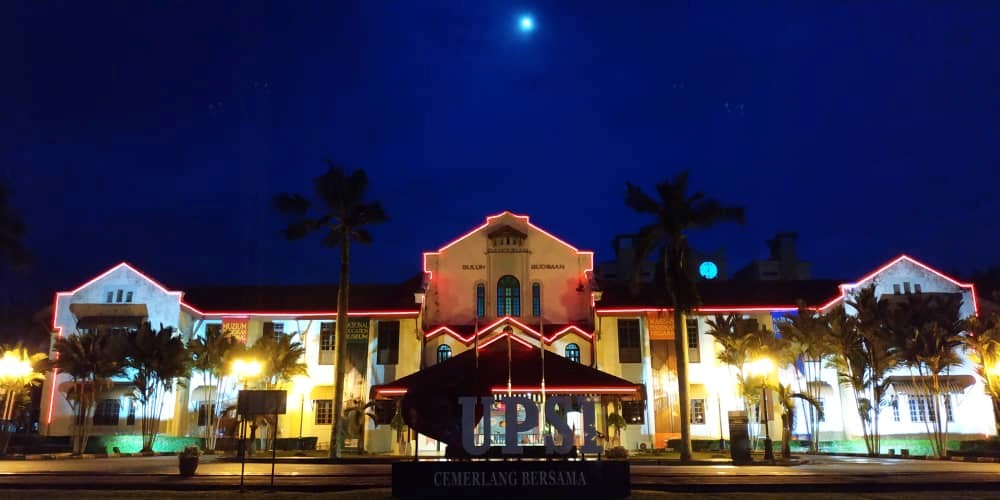
Suluh Budiman Building
Sultan Idris Education University was originally known as Sultan Idris Training College (SITC). Suluh Budiman Building is the main building of SITC, built in August 1919 and fully completed in June 1922. The design of this building was based on medieval Gothic Dutch architecture and can be clearly seen in the designs of Notre-Dame Church in France and Salisbury in England. In general, this building exhibits a capacious, luxurious, magnificent building structure and religious features. This building plan was set up by a famous architect from the Federated Malay States named Kesteven. It was built by craftsmen from Java and competent laborers from China and India. This two-storey building has a floor area of 3,239 square metres. It has two rows of buildings which are front and rear buildings consisting of two wings (right and left), forming the letter “H”. The top floor of this building was once used as the administrative center of SITC, accommodated principle office, staff offices, meeting rooms, general offices, publisher office and library. The lower part of building consists of classrooms and a main hall for monthly gatherings or college official functions. The building is built entirely by the use of load-bearing brick wall construction method while the floor is made of wood and cement. Patterned glass pieces provide clear natural lighting during the day. The original roof of building consisted of the Chinese tiles but had been changed into a cement-tiled roof. The outer walls were cladded with pebbles. During World War II, this building was the headquarter and hospital for Japanese military. Suluh Budiman Building gazetted under the National Heritage Act 2005 as National Heritage Building on 14 February 2009 and all restoration and conservation works on this building must be approved and monitored by National Heritage Department. On 24th August 2009, building conservation works, exhibition space and infrastructure setup that met the requirements of museum were implemented. The museum was fully completed in March 2011 and the inauguration ceremony was held on 19th July 2011, officiated by Her Majesty the Queen of Perak, Tuanku Bainun. The museum has one theme exhibition space and 20 permanent exhibition galleries.
